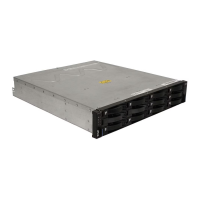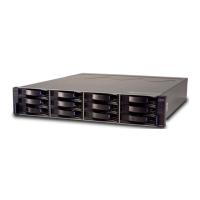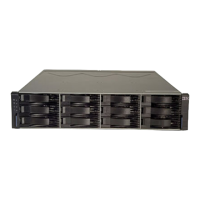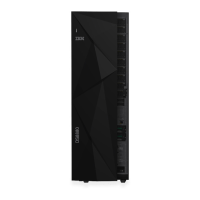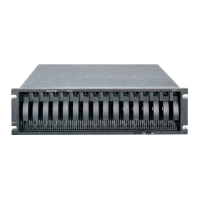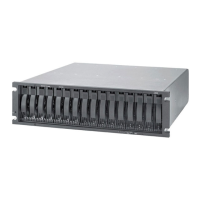Linux Config.fm Draft Document for Review March 28, 2011 12:24 pm
640 IBM System Storage DS3500: Introduction and Implementation Guide
Command (m for help): n
Command action
e extended
p primary partition (1-4)
p
Partition number (1-4): 1
First cylinder (1-15360, default 1):
Using default value 1
Last cylinder, +cylinders or +size{K,M,G} (1-15360, default 15360): +100M
Command (m for help): w
The partition table has been altered!
Calling ioctl() to re-read partition table.
Syncing disks.
We now need to create a map from the previous partition table. In order to do that, run the
following command:
# kpartx -a /dev/mapper/mpath0
List the /dev/mapper directory and the partitions on /dev/dm-0 to verify the correct partitioning
as shown in Example 20-15.
Example 20-15 very the partitioning
# ls /dev/mapper/
control mpath0 mpath0p1
# fdisk -l /dev/dm-0
Disk /dev/dm-0: 16.1 GB, 16106127360 bytes
64 heads, 32 sectors/track, 15360 cylinders
Units = cylinders of 2048 * 512 = 1048576 bytes
Disk identifier: 0xebba465c
Device Boot Start End Blocks Id System
/dev/dm-0p1 1 101 103408 83 Linux
The last step is to format the partition and mount it with the following commands:
# mkfs.ext3 /dev/mapper/mpath0p1
# mount /dev/mapper/mpath0p1 /mnt
Removing Virtualized Devices
The following multipath commands will “flush” all unused device mappings and it is not
possible to run this command if the device is mounted.
multipath -F
Important: You must make sure you are running IO to the virtual devices created by device
mapper, and not the physical device paths. If you are running IO to the physical paths,
device mapper will not be able to manage a failover and the IO will fail.

